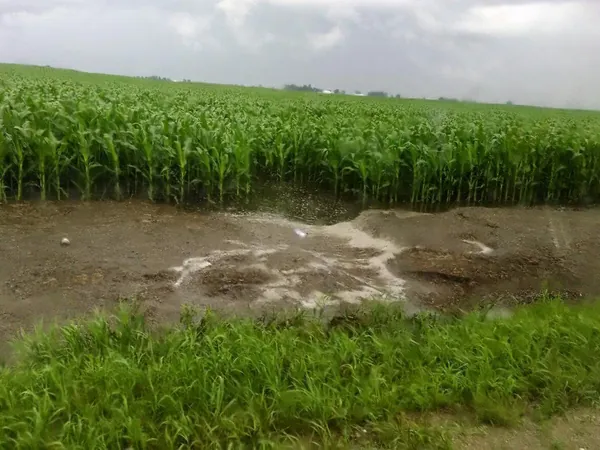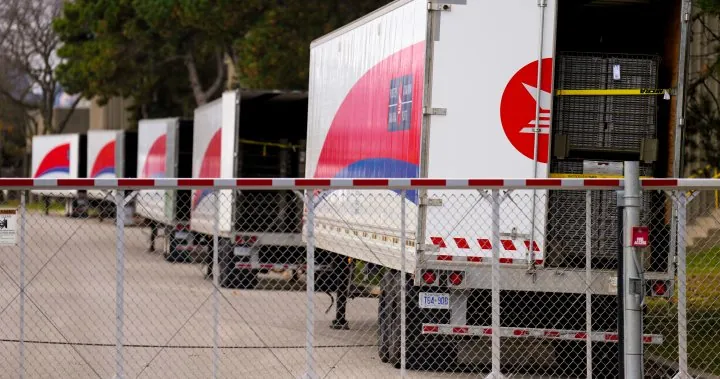
America's Crops at Risk: Study Reveals Alarming Nutrient Loss Linked to Climate Change!
2024-11-18
Author: Benjamin
Introduction
A recent study from Penn State has revealed a disturbing trend impacting American agriculture: phosphorus, a crucial nutrient for soil health and crop production, is being washed away from farmland at alarming rates due to intensified rainstorms across the United States. This loss poses a significant threat not only to crop yields but also to food prices, as researchers warn that the future of food security is at stake.
Study Overview
Published on November 18 in the prestigious *Proceedings of the National Academy of Sciences*, the study analyzed data from 430 rivers over the past four decades, highlighting that phosphorus loss from agricultural lands has risen significantly, even with ongoing efforts to curb this environmental issue.
Expert Insight
Li Li, a professor of civil and environmental engineering at Penn State and the lead author of the study, emphasized the link between extreme weather events and nutrient loss. "We've observed that increasing rainfall from severe storms leads to dangerous flooding and mudslides," Li explained. "Our research shows how these storms are stripping the soil of crucial nutrients like phosphorus and transferring them into our waterways."
Importance of Phosphorus
Phosphorus is vital for various biological processes, including DNA formation and energy transfer within cells. Unlike nitrogen, which can be replenished through atmospheric processes, phosphorus is a non-renewable resource found in limited geological reserves. Once phosphorus is lost from land to water, it cannot be easily restored.
Ecological Implications
The implications of this phosphorus depletion are grave. Not only could it lead to lower agricultural productivity and soaring food prices, but it also has ecological repercussions. Excess phosphorus in waterways can instigate harmful algal blooms, contaminating water supplies and harming aquatic life by depleting oxygen levels. This situation translates into higher costs for water treatment and greater health risks for communities relying on these water sources.
Research Findings
Using advanced deep learning techniques, the study showed that while 60% of the rivers examined reported declining phosphorus levels, the total influx of phosphorus into rivers has actually increased. The main culprits? Agricultural regions, where phosphorus levels are climbing despite constraints in urban areas that have seen improvements due to better wastewater management practices.
Need for Better Management Strategies
"The data suggests our existing strategies to manage phosphorus runoff from agriculture are not yielding the desired results," says Li. "Conversely, the reduction of phosphorus in urban areas indicates the success of efforts targeting point source pollution."
Climate Change Connection
Amid these findings, the researchers highlighted the overarching challenge posed by climate change, noting that extreme weather patterns are linked to increased phosphorus runoff. This dual challenge calls for innovative solutions that blend new agricultural technologies and revised farming practices aimed at mitigating phosphorus loss.
Innovative Solutions
One promising innovation comes from Penn State alumnus Hunter Swisher, founder of Phospholutions. His company has developed a fertilizer designed to enhance phosphorus retention in soil. Remarkably, their studies show that this technology can reduce phosphorus runoff by 78% compared to traditional fertilizers. Phospholutions is currently expanding its market reach in the Americas, Europe, and India and is poised to make significant contributions in the fight against nutrient loss.
Conclusion
As the study concludes, it is imperative that both policy makers and agricultural practitioners come together to address phosphorus pollution effectively. If we fail to reverse this trend, the consequences for crop production, food prices, and ecosystem health could be dire. The clock is ticking—will we act in time to save our soil?









 Brasil (PT)
Brasil (PT)
 Canada (EN)
Canada (EN)
 Chile (ES)
Chile (ES)
 España (ES)
España (ES)
 France (FR)
France (FR)
 Hong Kong (EN)
Hong Kong (EN)
 Italia (IT)
Italia (IT)
 日本 (JA)
日本 (JA)
 Magyarország (HU)
Magyarország (HU)
 Norge (NO)
Norge (NO)
 Polska (PL)
Polska (PL)
 Schweiz (DE)
Schweiz (DE)
 Singapore (EN)
Singapore (EN)
 Sverige (SV)
Sverige (SV)
 Suomi (FI)
Suomi (FI)
 Türkiye (TR)
Türkiye (TR)